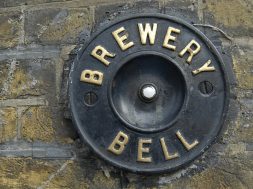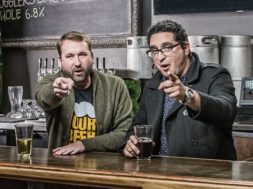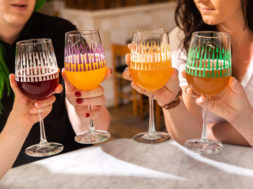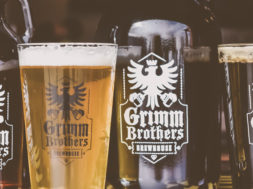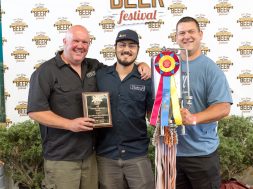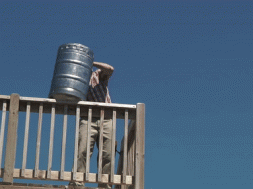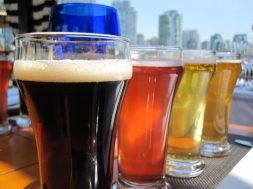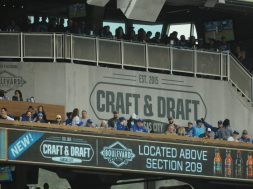18 Defining Moments in the History of Craft Beer
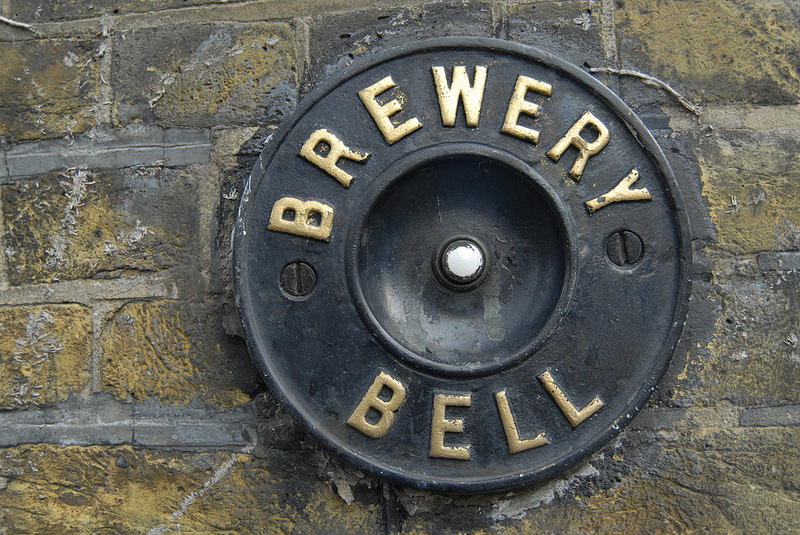
via VinePair by Nick Hines
American craft beer is bigger than ever, both in number of breweries and stylistic influence. As the craft beer “trend” turned into a stable, profitable, and growing industry over the past 20 years, there have been plenty of defining moments. Some moments center on specific beers, others on buyouts, and a few on industry shifts that inspired new styles.
Any list of defining moments is bound to create controversy. Every craft beer lover has their special beer that changed their drinking preferences, or some memory of an event that solidified their devotion to small beer. But there are certain things that are undeniably special moments in craft beer. Here’s our list of the 18 greatest hits.
1972: Cascade hops are made available
Cascade hops were released from a government breeding program in 1972 and have since become one of the most popular hop varieties in craft beer. They produce floral, slightly bitter beers with citrus notes as well. Cascade hops have become one of the most recognizable hops in craft beer. Today, hop innovation is a big business, but Cascade lives on as a classic.
1972: Anchor Brewing revives the American Porter
Anchor Brewing is a standout in the craft brewing world in that it isn’t some hip new upstart. It’s been around since the late 1800s with just a few dips and turns. But in 1972, Anchor brought back an old favorite: the porter. “Anchor Porter was the first post-Prohibition American porter in the U.S.,” Anchor brewmaster Scott Ungermann told Food & Wine. American-made porters are alive and well to this day.
1978: Jimmy Carter federally legalizes homebrewing
With Prohibition came the ban on homebrewing. Yet even after Prohibition ended, there was still a federal law on the books that banned homebrewers from innovating on their own. President Carter changed that (although the last state laws against homebrewing in Alabama and Mississippi weren’t reversed until 2013), and now even a president has joined the homebrew movement. With an average of one new brewery a week opening, the need for qualified brewers who start their craft at home has never been greater.
1980: Sierra Nevada Pale Ale focuses on American hops
American hops are a well-recognized style in today’s hop-forward craft beer market, but back in 1980, it was far from the average drinker’s mind. Sierra Nevada’s flagship beer uses plenty of Cascade hops, which sets it apart from anything else that was made at the time. Something clicked. It’s still Sierra Nevada’s best seller with the same recipe.
1991: Fat Tire ignites the Colorado craft beer scene
New Belgium Brewing is a staple of the craft beer scene in Colorado, a state known for its craft beer, and it’s in large part thanks to Fat Tire. Fat Tire is an amber ale and far from the hop bombs that rule the craft beer world today. Yet it remains important, both for New Belgium and for Colorado craft beer.
1995: Boston Beer Company goes public
Boston Beer Company rode the popularity of it’s flagship Samuel Adams Boston Lager straight to the stock market. In 1995, listings on the back of Sam Adams six-packs advertised that people could buy 33 shares of Boston Beer Company at $15 on the company’s initial public offering. The IPO raised them $60 million and started the company on its way to becoming one of the most successful beer brands in the United States. The Boston Beer Company today has grown to include numerous brands, ciders, and even an experimental arm of the company, and those $15 shares are now worth more than $160.
1995: Goose Island Bourbon County Brand Stout is the first whiskey barrel-aged beer
Gregory Hall, who used to be the brewmaster at Goose Island, brought his Bourbon County Brand Stout to the Great American Beer Festival and put it under the Imperial Stout category. It was disqualified for being too strong. Today is seems like every big-time craft brewery has its own barrel aging program.
2001: Dogfish Head introduces continuous-hopping method with their 90 Minute IPA
90 Minute IPA is the beer that brought Dogfish Head into the mainstream. Now there’s a 60 minute, 75 minute, and 120 minute. The continuous hopping turned traditional hopping on its head. Instead of brewers adding hops at the beginning for bitter and at the end for aroma, Dogfish Head put hops in throughout the brewing process, creating a hoppy IPA without the bitterness. For the full story, check out VinePair‘s oral history of the 90 Minute IPA.
2002: Oskar Blues puts their craft beer in cans
In the early days of craft beer, long before it became cool, craft beer came in bottles, macro brew came in cans. Oskar Blues flipped that upside down when it decided against bottles. Cans are now the new cool, and more than 2,100 craft beers are put in aluminum, according to CraftCans.
2005: Russian River Brewing releases Pliny the Younger
Russian River solidified its place in the craft beer world with Pliny the Elder, a double IPA consistently ranked as the best IPA in the country. Then the brewery decided to go even bigger with Pliny the Younger, a triple IPA that’s filled with high American hop flavors and alcohol. There was nothing like Pliny the Younger when it was released, but more craft breweries are making big triple IPAs now. Still, it’s one of the most sought-after cult beers thanks to its once-a-year, draft-only offering.
2011: Anheuser-Busch buys Goose Island for $38.8 million
Goose Island was one of the preeminent craft beers in the country before it became the first all- out craft brewery purchase by Anheuser-Busch. Then everything changed with the influx of big beer money. Goose Island’s production and distribution expanded, but some craft beer bars and bottle shops dropped Goose Island completely. It was obviously profitable, though. Anheuser-Busch went on to purchase eight more craft breweries.
2011: Heady Topper is put in cans
The Alchemist brewery realized they were onto something and needed to expand in 2011. They’d been making their Heady Topper beer solely to be sold on tap at their brew pub since 2003, but people were taking it into the bathroom and bottling it to resell online. So The Alchemist started canning. It’s brewed year around, yet there’s always a shortage. The beer has created a noteworthy line of devoted customers around distributors every week while people wait for the unfiltered, unpasteurized cult beer.
2011: Left Hand Brewing bottles the first craft nitro beer
Guinness is the most well known nitro beer, and it has a long distinctive history of proper pouring and a distinct taste. But in 2011, Left Hand Brewing entered the nitro scene by spending hundreds of thousands of dollars on their own nitro beer. Left Hand Milk Stout Nitro took off as America’s stout as it declared “independence from imported stouts.”
2015: Constellation buys Ballast Point Brewing for $1 billion
Ballast Point opened in San Diego in 1996. It became a craft-beer-drinker favorite behind ocean-inspired brews like Sculpin IPA and Big Eye IPA. Then it sold to the big guys. Constellation’s buyout was the largest craft beer purchase price ever, raising the bar and showing just how valuable good craft beer is.
2015: Lagunitas goes mainstream
When it comes to craft beer buyouts, those from AB InBev, Constellation, and MillerCoors get most of the attention. But Heineken made a splash by buying a 50 percent stake in Lagunitas Brewery. This meant that Tony Magee, owner of Lagunitas and virulent craft beer supporter, was suddenly no longer in the craft beer business. The purchase proved that no craft brewery is immune to big beer investments – even one with an owner who tweeted, “Selling one’s brewery is selling all of one’s best friends’ careers, their hearts, the portion of their lives they spent working for you.”
2016: Anheuser-Busch InBev buys up SABMiller
Yes, this list is about craft beer, not mega brewers. But the AB InBev buyout had an effect on the craft industry in more ways than one. Perhaps most importantly, the company signed an agreement that it won’t buy another brewery without approval from the Justice Department. Any craft brewery hoping for a buyout from the world’s largest beer company should lay those hopes to rest. The agreement left it with 11 former craft breweries, including Goose Island, Blue Point, and Elysian.
2016: MillerCoors beats a lawsuit against Blue Moon being a craft beer
In 2015, a craft beer lover sued MillerCoors for the way it marketed its Blue Moon beer. Blue Moon, the lawsuit stated, marketed itself as a craft beer even though it isn’t, and has never been, a craft beer. Big beer won in this case, and Blue Moon was permitted to keep its crafty image and marketing.
2016: The number of United States breweries tops 5,000 for the first time
For the United States, there’s never been a better time in beer. And while craft beer shelves can get crowded and options can feel overwhelming, more is always better. As of Nov. 30, 2016, the United States has 5,005 breweries. Best of all, 99 percent of those are small and independent.
